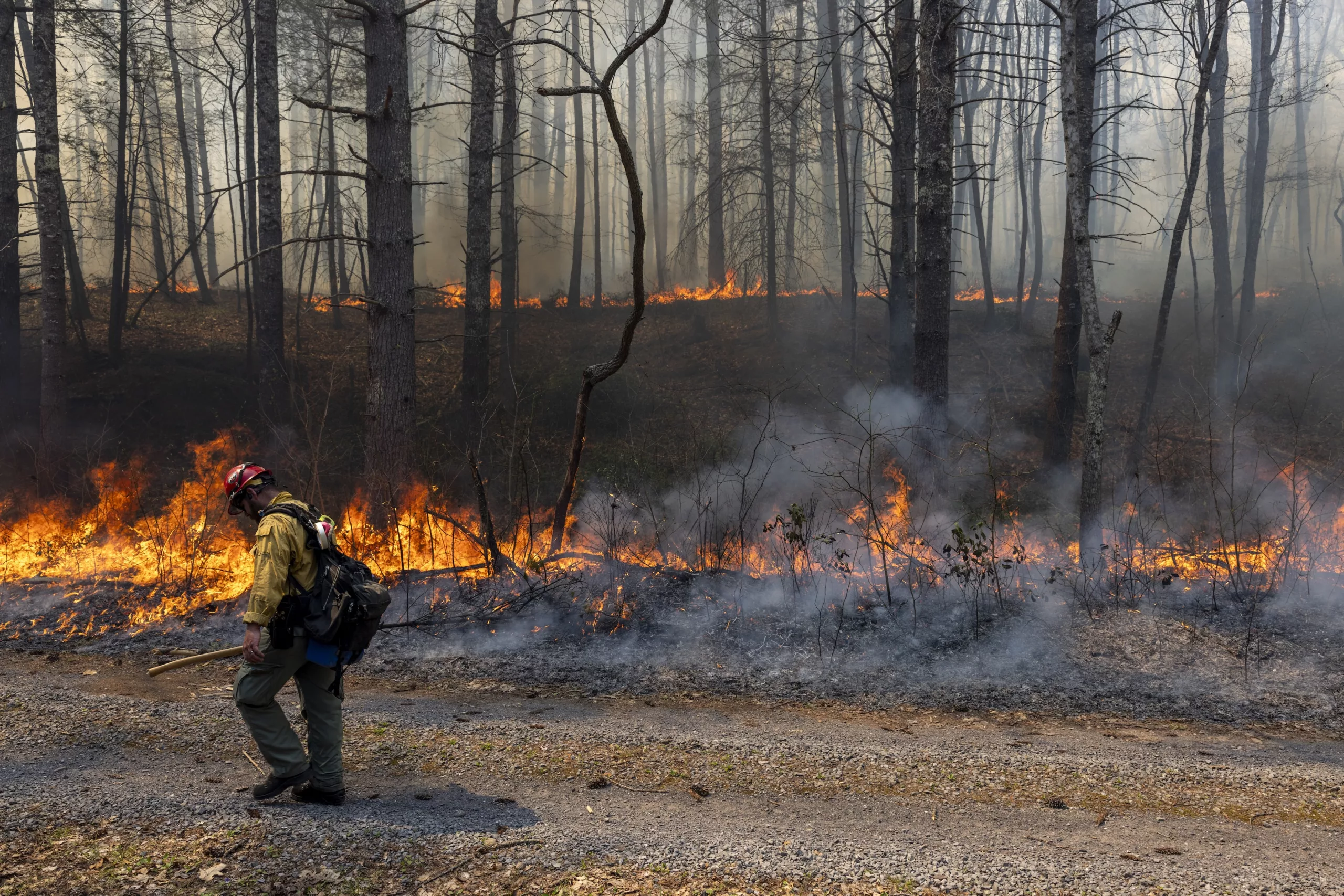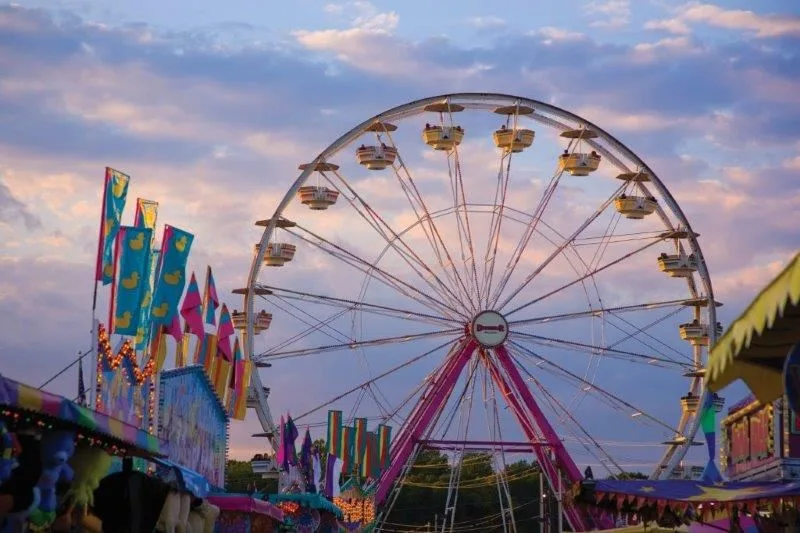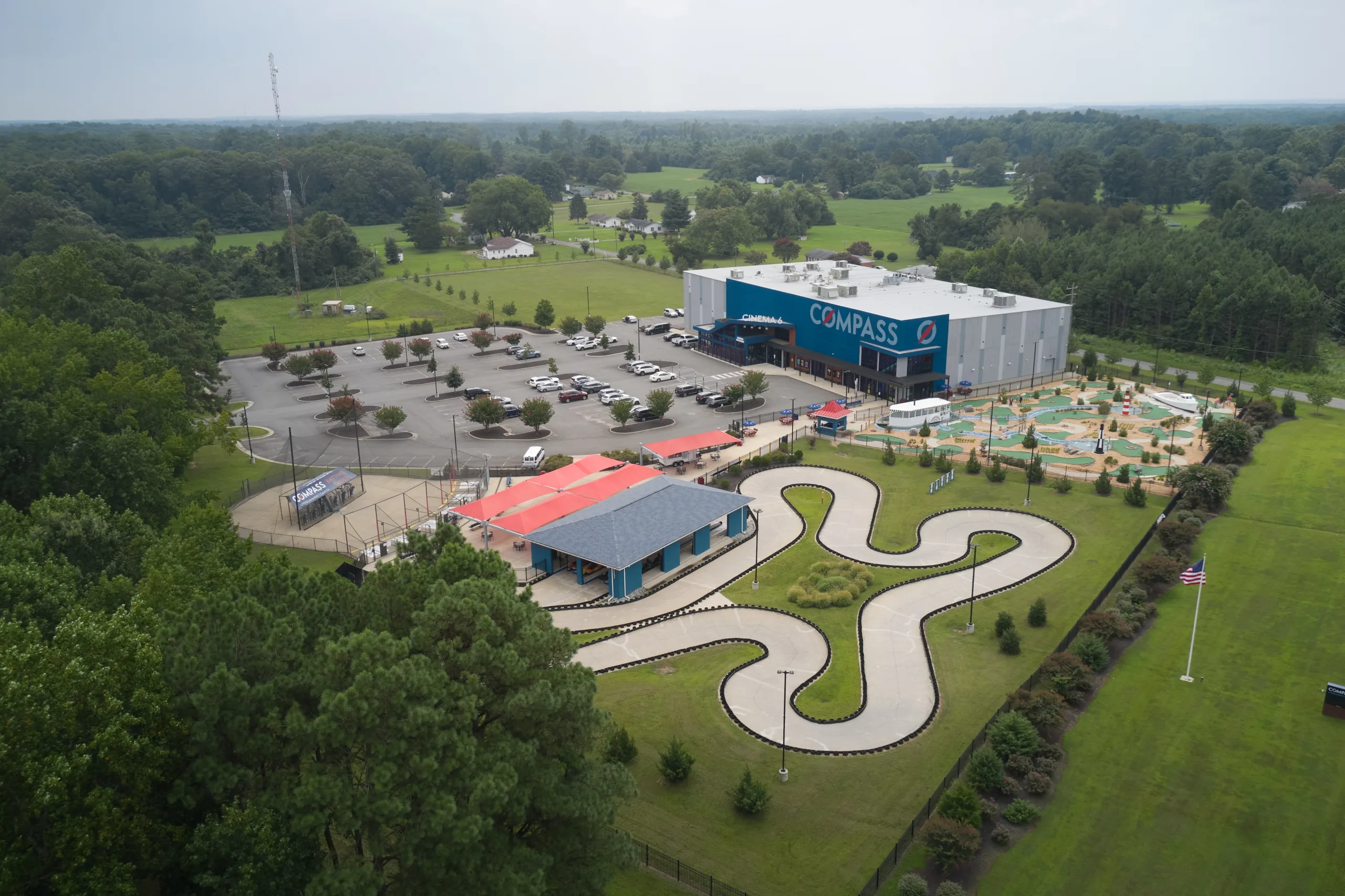I’m guessing you don’t have this in a smaller size?” I ask the day’s burn boss. The bright yellow Nomex suit she hands me is laughably large on my 5-foot frame, requiring duct tape around the ankles so I don’t trip.
While it may not be runway-worthy attire, I’m thankful for the peace of mind the fire-resistant material brings. The rest of the burn crew is dressed similarly, although their clothes actually seem to fit, and they’re loaded down with heavy equipment like drip torches and fire rakes.
Any anxiety I feel about being this close to living flames is quickly assuaged as I watch the fire crew calmly go about their jobs. The fire moves slowly enough that I’m able to walk alongside it, with flames small enough to step over, my escort ensuring we don’t get boxed in and that we stay ahead of the flames.
The blast of heat I keep expecting as the fire spreads never materializes. It’s only then that the differences between a wildfire and a prescribed fire finally click.

Fire Power
From the pine savannas along the coast to the Appalachian Mountains, fire shaped the Virginia landscape. Before Smokey Bear’s directive that “Only You Can Prevent Forest Fires,” and decades of heavy suppression starting in the early 1900s, naturally occurring and controlled burns were a fairly common event.
Judy Dunscomb started with The Nature Conservancy of Virginia (TNC) in the early ’90s, when the organization and government agencies were on the cusp of bringing controlled burns back to the land.
“There was some expectation on the part of observers that we would just roast everything, that it would be like a Hollywood movie fire, and it would go from a little spark to this 60-foot wall of flames that would consume everything,” Dunscomb, now a senior conservation scientist, says.
Controlled burns are set with intention, a practice Indians used to promote growth and sustain vital natural resources for thousands of years. The technique is used by private and corporate tree farmers to prevent forest fires and maximize timber growth for harvesting.
Every aspect of the burn—from the ideal wind direction, relative humidity, and days since rain to the crew and equipment needed—is carefully discussed and planned before any flames come close to sparking. If, at any point, those conditions become less than ideal, the burn crew, led by a burn boss with years of experience and training, will wait for another day to burn.
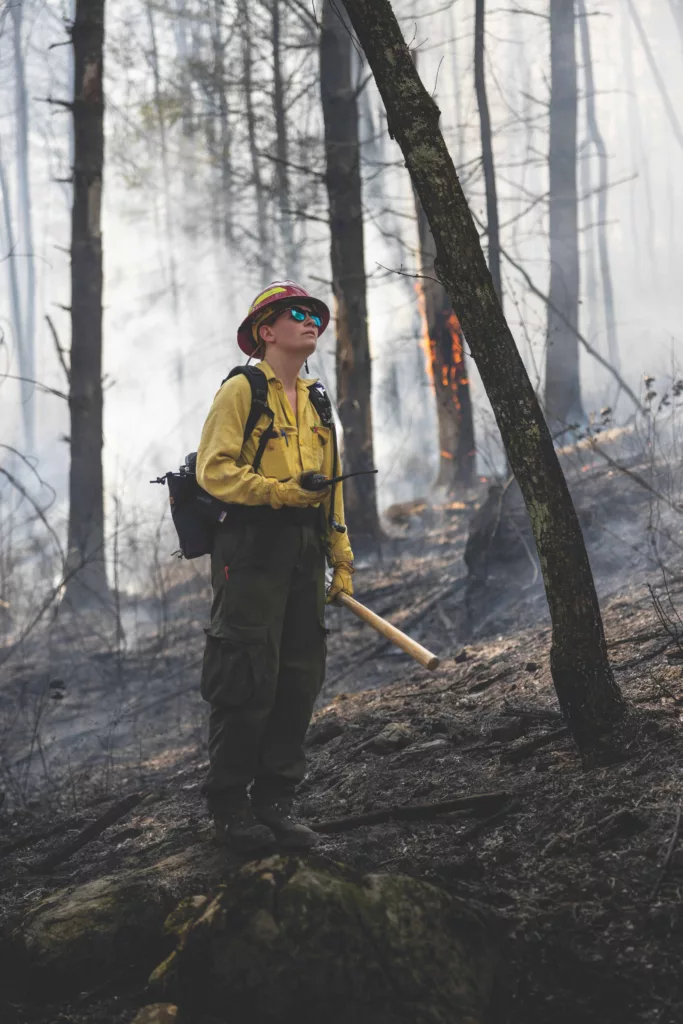
Laurel Schablein serves as the fire effects monitor (FEMO) at the Blue Panther burn on April 15, 2024. The FEMO helps track changes in weather throughout the day and measures fire behavior such as flame length and rate of spread to estimate where desired effects are being achieved.
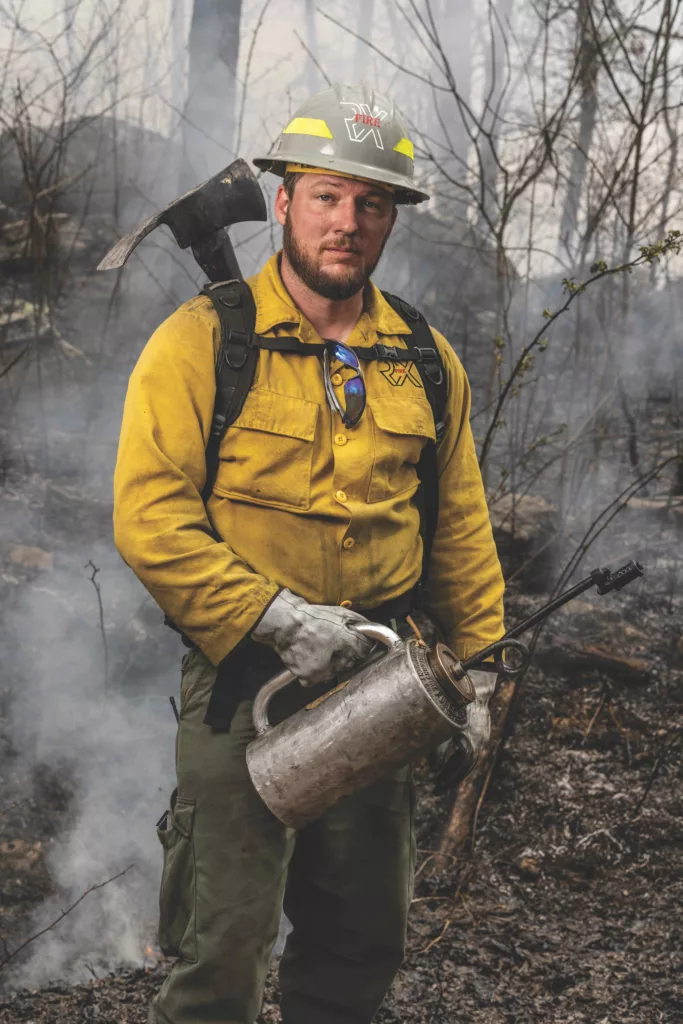
Sheldon Simmons of RX Fire Effects, a Virginia company specializing in land management services, aids in the Mare Run burn in Rockingham County, successfully conducted on April 8, 2024. Originally scheduled for March 14, Burn Boss Bobby Klontz made the tough decision to cancel after taking onsite weather measurements showing drier relative humidity than predicted. Decisions like these ensure safety for both the crew and the forest.
Due to the sheer amount of resources, equipment, and personnel needed to safely control a fire, no single organization in Virginia burns alone. TNC works with the U.S. Forest Service, as well as the Virginia Departments of Conservation and Recreation, Wildlife Resources, and Forestry, to burn across the Commonwealth.
“It took some time to build trust between those of us who saw fire as an ecological management tool and those entities who saw themselves as being responsible for forest protection,” Dunscomb says.
As controlled burns have become a more accepted ecological management practice throughout the South, technological advancements have made burning a little easier to manage. “The burns I did in the ’90s were like the analog version of prescribed burning,” Dunscomb says.
During those early burns, team members carried metal frame packs, hauling around five gallons of water to help contain the fire should it jump a control line. Now, fire engines and agile UTVs (utility task vehicles—think ATVs, but bigger) carry water around the site, ensuring flames don’t go outside of the burn unit.
Drones have become an additional ignition source, able to light a fire in the middle of a burn area where it is harder for an ignition crew to reach. The drones carry ping-pong-like balls, known as dragon eggs, filled with a chemical compound that will ignite upon impact with the ground.
Although her senior role doesn’t allow her to get out with a crew as often, the thrill is not gone for Dunscomb. “It feels really good to be part of a group of folks trying to restore our beautiful forests,” she said. “It’s fire that helps heal the landscape.”

A safe burn begins after hours of preperation, and only when all factors (such as wind speed/direction and humidity) are met. Firebreaks devoid of fuel are established along the area’s perimeter; then, a slow-burning backing fire is lit downwind, creating a blackline as it burns fuels against the wind. The igniter sets a flanking fire to clear fuel along the handline perpendicular to the burn. Lastly, the headfire is lit in the direction of the wind; the headfire burns quickly, but extinguishes. Diagram by Peter Bull

Return of the Pines
On the coast, TNC’s Virginia Pinelands Team is working to bring longleaf pines back to the landscape. Where this dominant species once covered a million acres in Virginia alone, only a few hundred trees remained by the early 2000s, as timber was over-harvested and developments ate up large stands.
Longleaf pines are a fire-adapted species having evolved with frequent natural fires over thousands of years. Instead of putting all of its energy into above-ground growth, a longleaf pine sapling focuses on growing a deep root system with only a tuft of needles on the surface to indicate any sign of life. When fire comes through, those needles may burn off but the deep root system means the tree is prepared to come roaring back to life.
“They stay in that grass stage anywhere from two to eight years until a good fire comes through, and then they shoot up 15 feet in a few years,” says Andi Clinton, a pinelands restoration specialist.
Pine savannas are meant to be an open habitat. But when TNC bought Piney Grove Preserve in 1998, shrubs and smaller trees filled out the crowded midstory. Years of heavy fire suppression allowed the leaf litter to clutter the ground, providing more fuel for potentially more dangerous fires. “If we let small fires burn for a week doing what they want to do, it’d get better overall,” Clinton says.
The reserve now encompasses 3,200 acres in Sussex County, standing as a testament to the benefits of controlled burns after more than two and a half decades of frequent burns. As the pines return, red-cockaded woodpeckers appear, too, an endangered species that exclusively nest in mature pine trees.
While scientists know that fire is essential for this species and this landscape, a lack of qualified personnel and limited resources means there is only so much work that can happen on the limited days when burn conditions are just right. To work on controlled burns, crew members must go through an intense training system largely designed around federal operations out West. “A lot of those requirements are based around wildfire and, unfortunately, there’s not a prescribed fire track,” Clinton says.
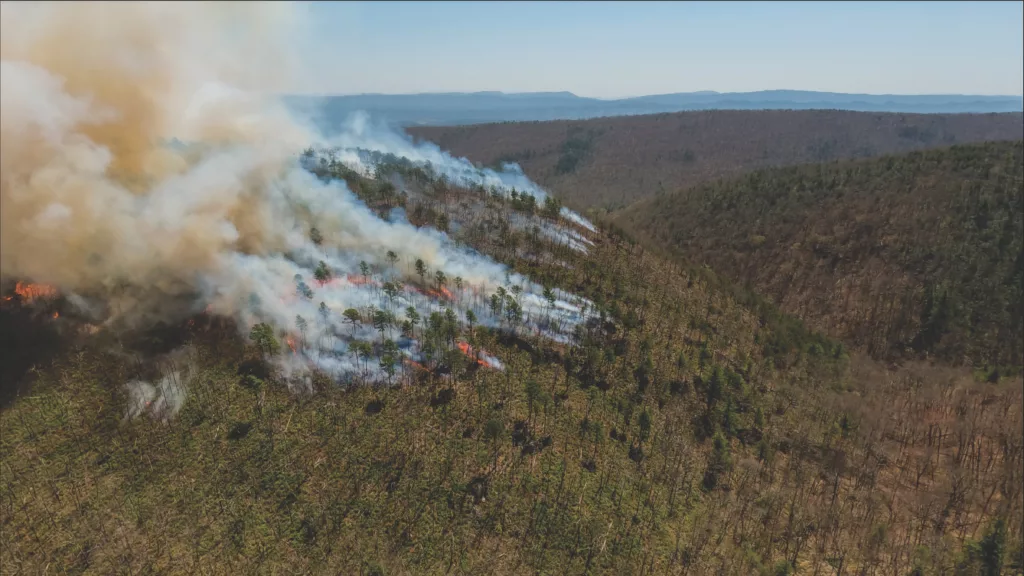
Life from the Ashes
Across the state, TNC’s Allegheny Highlands Program focuses on using prescribed fire to maintain the Appalachian Mountains’ rich biodiversity.
“Natural fire, whether it was caused by lightning strikes or set by [Indians], has turned these mountains into what they are today,” says Blair Smyth, the program’s director. “Disturbance is necessary in keeping a forest healthy and resilient.”
By examining sediments at the bottom of ponds and tree rings on dead stumps, scientists know that fire occurred periodically on the landscape every three to nine years, shaping a mosaic of habitats that included open woodlands with wildflowers, young forests, and old-growth stands.
In 2002, TNC bought 7,600 acres to create Warm Springs Mountain Preserve in Bath County. The property sits atop a ridgeline bordering National Forest land, making it a highly valuable tract for maintaining habitat connectivity for a variety of species.
“If we endeavor to return fire to the landscape in a way that’s going to mimic that more natural movement, then boundary lines and property lines can be disruptive to that,” says conservation project manager Laurel Schablein. But because TNC has already developed relationships with the Forest Service, there are policies and funding in place that allow them to put fire on larger swaths of land.
With climate change extending drought conditions and creating more extreme wind events, wildfires will grow increasingly more uncontrollable and damaging. Controlled burns are used as a tool to clear highly flammable underbrush, mitigating those effects. And, as more species migrate north to higher-elevation habitats, fire will play a critical role in maintaining Appalachia’s storied biodiversity.
“As we go into the future, one of the things that’s going to be a critical piece of those solutions is healing that relationship between people and fire,” Schablein says.
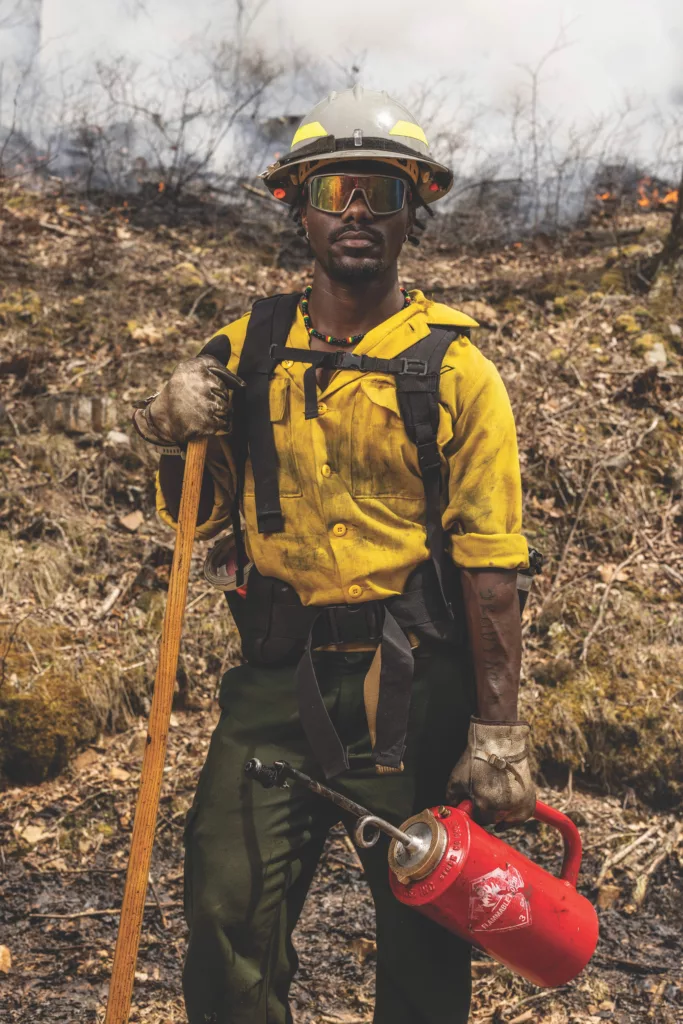
Just a few of the many individuals who made Mare Run’s April burn successful.
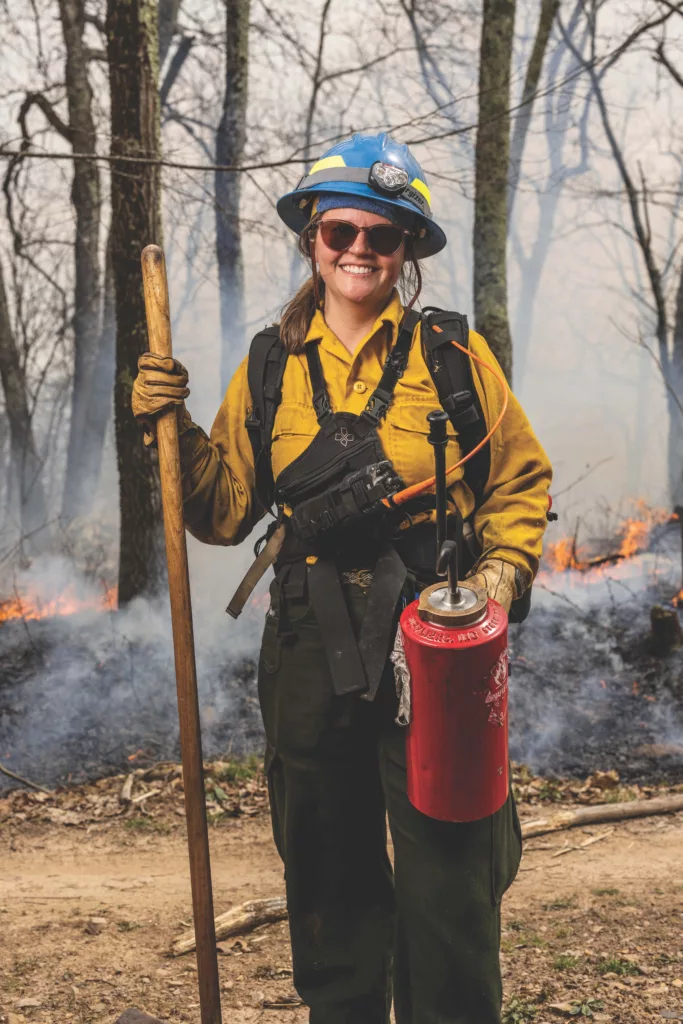
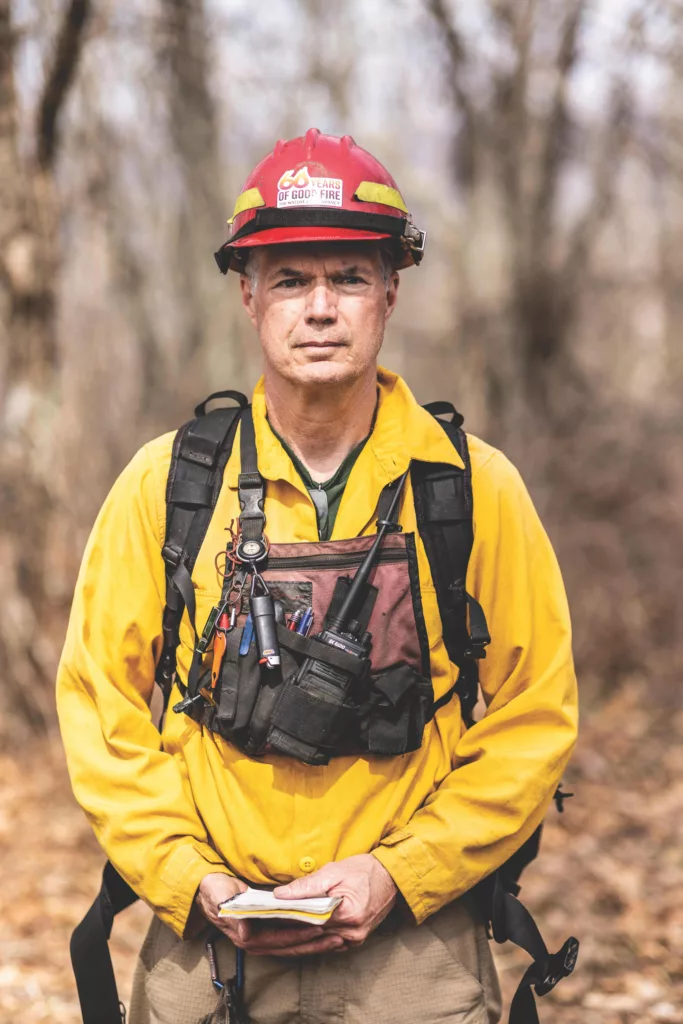
Burn Boss Bobby Clontz during the Mare Run team briefing.

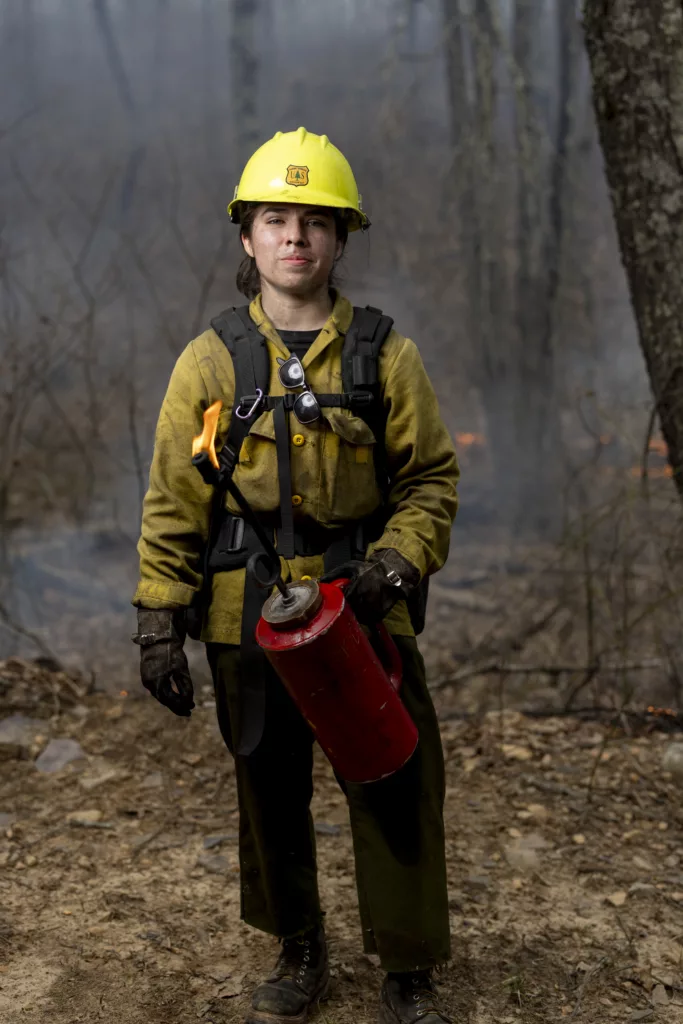
This article originally appeared in the April 2025 issue.

